
Toxoplasma Abortion
A page about toxoplasmosis in sheep describing cause, clinical signs, diagnosis and control.
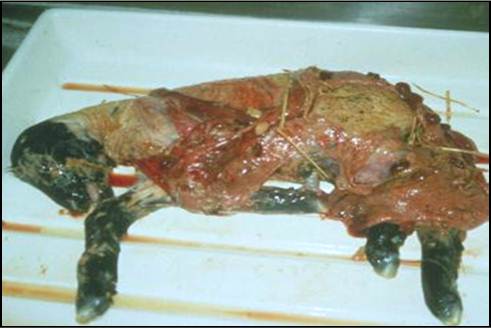
Introduction
Toxoplasmosis is a disease caused by a protozoan parasite. The main source of infection is cat faeces. If you encounter a sheep abortion episode it is important to establish a definitive diagnosis as there are quite a number of causal agents that contribute to the abortion syndrome. Toxoplasmosis is not restricted to sheep. The disease is zoonotic, which means it can be passed to humans. In humans it can cause acute, life-threatening illness, and infection of a pregnant woman could seriously damage her unborn child. Pregnant women should avoid all involvement with lambing ewes and shouldn’t even handle the clothing of those who work with sheep.
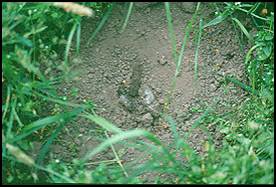
Aetiology
Toxoplasmosis is caused by Toxoplasma gondii, a protozoan parasite. This microscopic organism causes infection in a variety of species though the main source of infection is cats.
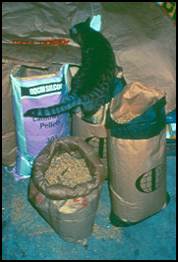
Epidemiology
The clinical consequences of infection are determined by the timing of infection, the immune resistance of the animal infected and the numbers of toxoplasma oocysts taken in. Toxoplasmosis is caused by toxoplasma oocysts picked up from feed or hay, or off pasture that has been contaminated by cat faeces. Toxoplasma oocysts are shed by cats for a short period when they have just been weaned and first start hunting. This is because the cat becomes infected by eating infected rodents. One adolescent cat can shed enough cysts to infect thousands of ewes. This is because infection of a few oocysts from an infected mouse are amplified in the cat through massive multiplication resulting in shedding of millions of oocysts in the cat’s faeces over a few weeks, after which the cat becomes immune. These oocysts are very resilient and can survive for very long periods in feed or on pasture. The organism also survives from generation to generation in mice and rats providing an ongoing source of disease for susceptible cats. It is important to realise that toxoplasmosis is NOT a sheep to sheep disease so mixing sheep prior to pregnancy will not result in control.
Once a ewe has been infected, she soon becomes immune and is unlikely to show signs of the disease in subsequent years. It is only when an infection is picked up for the first time during pregnancy that problems occur.
The stage at which an infection is picked up during pregnancy will determine the outcome as there is an approximate six week lag period between infection and onset of clinical signs:
First 60 days – foetus absorbed and the ewe appears barren.
60 – 120 days – abortion in late pregnancy with mummified foetuses, stillbirths or weak and sickly lambs that often die.
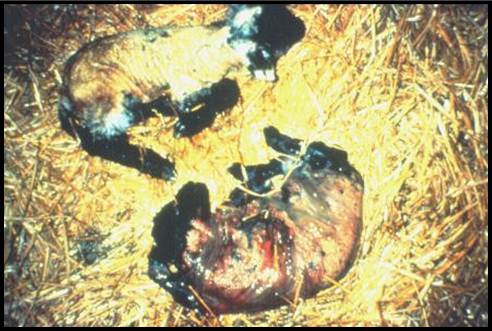
Clinical Signs
There are five main syndromes of abortion in sheep – Barren to tup, abortion, mummification (particularly common with toxoplasmosis), stillbirth (occasionally one live lamb born with a dead lamb) or the birth of weak lambs which fail to suckle properly and often succumb to disease in young life. It is however common to have many or all of these syndromes on a farm at the same time.
A clinical sign which is characteristic of toxoplasmosis abortion is the development of small white areas in the cotyledons (buttons) of the placenta. These are caused by focal necrosis (death of cells) in areas of the placenta due to damage caused by multiplication of the Toxoplasma organism.
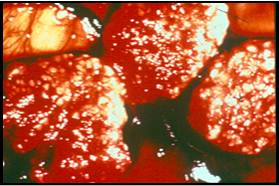
Diagnosis
Clinical signs of toxoplasmosis are indicative of infection but laboratory tests are required for a definitive diagnosis. The pale areas affecting the cotyledons of the placenta described under clinical signs are highly characteristic for toxoplasmosis. If these areas are cut with a knife, they may be chalky due to calcification. Laboratory tests are required for a specific diagnosis however.
Laboratory investigation
Antibody testing
Retrospective diagnosis of toxoplasma infection can be made by measuring antibody levels in serum samples. However as toxoplasma is ubiquitous in the environment, a titre to toxoplasmosis is not a definitive diagnosis that it is the cause of an abortion problem. Therefore antibody testing is of limited value in establishing a definitive diagnosis. However, testing of foetal heart blood from aborted foetuses is useful as a titre in an aborted foetus is quite a useful diagnostic indicator.
Identification of the organism
Samples that can be submitted for histopathology (examination under a microscope). These include a variety of foetal organs from the aborted material with the brain particularly useful. Characteristic pathology provides a definitive diagnosis.
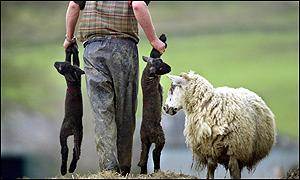
Control
Control of toxoplasmosis is based on three equally important aspects:
- Retaining sheep in the flock after an abortion episode – Sheep that have aborted with toxoplasmosis are immune, probably for life. It is therefore important to retain as many sheep in the flock that were exposed to disease as possible after the outbreak as these sheep will maintain a high level of flock immunity, meaning that only replacements will have to be vaccinated.
- Rodent control – As rodents provide an ongoing source of infection, an effective rodent control plan must be implemented on farm. This includes maintaining the farm cat population as part of this process. However, it is useful to neuter all farm cats to avoid the production of further kittens that can act as a new source of infection. Euthanasing existing farm cats is not a useful approach as this often leads to the entry of a new population of cats, providing further kittens which will potentiate the infection and life cycle of disease
- Vaccination – A live vaccine, Toxovax, is available for the control of toxoplasmosis. The vaccine is administered at least 3 weeks ahead of tupping and must be ordered specially in advance as it has a short shelf-life. It is advisable to keep in close contact with your prescribing vet and collect the product as soon as it arrives with them. Use the product on the day of collection from your vet. Once toxoplasmosis has been diagnosed on a farm, vaccination ahead of the next tupping is only conducted in replacement sheep. The only exception to this is if various groups are maintained separately on a farm where exposure levels to toxoplasmosis vary between groups. This can lead to variable levels of immunity and in that circumstance it may be advisable to vaccinate all sheep in non-exposed groups to avoid future losses, particularly if sheep move between groups where their exposure status could change. For information on the vaccine please click here. Further information is available from your local veterinary practitioner from whom advice must be sought.
